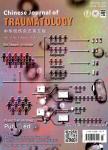Prehospital care for multiple trauma patients in Germany
Prehospital care for multiple trauma patients in Germany作者机构:Departrnent for Traumatology and Orthopedic Surgery Cologne-Merheim Medical Center (CMMC) University of Witten/Herdecke (UW/H) Ostmerheimerstr. 200 D-51109 Koln Germany
出 版 物:《Chinese Journal of Traumatology》 (中华创伤杂志(英文版))
年 卷 期:2015年第18卷第3期
页 面:125-134页
核心收录:
学科分类:1002[医学-临床医学] 0905[农学-畜牧学] 08[工学] 09[农学] 081201[工学-计算机系统结构] 0812[工学-计算机科学与技术(可授工学、理学学位)]
主 题:院前急救 患者 护理 德国 快速评估 身体部位 身体检查 网络认证
摘 要:For the German speaking countries, Tscherne s definition of polytrauma which represents an injury of at least two body regions with one or a combination being life-threatening is still valid. The timely and adequate management including quick referral of the trauma patient into a designated trauma center may limit secondary injury and may thus improve outcomes already during the prehospital phase of care. The professional treatment of multiple injured trauma patients begins at the scene in the context of a well structured prehospital emergency medical system. The Primary Survey is performed by the emergency physician at the scene according to the Prehospital Trauma Life Support (PHTLS)-concept. The overall aim is to rapidly assess and treat life-threatening conditions even in the absence of patient history and diagnosis ( treat-first-what-kills-first ). If no immediate treatment is necessary, a Secondary Survey follows with careful and structured body examination and detailed assessment of the trauma mechanism. Massive and life-threatening states of hemorrhage should be addressed immediately even disregarding the ABCDE-scheme. Critical trauma patients should be referred without any delay ( work and go ) to TR-DGU ® certified trauma centers of the local trauma networks. Due to the difficult prehospital environment the number of quality studies in the field is low and, as consequence, the level of evidence for most recommendations is also low. Much information has been obtained from different care systems and the interchangeability of results is limited. The present article provides a synopsis of recommendations for early prehospital care for the severely injured based upon the 2011 updated multi-disciplinary S3-Guideline Polytrauma/Schwerstverletzten Behandlung , the most recently updated European Trauma guideline and the current PHTLS-algorithms including grades of recommendation whenever possible.



